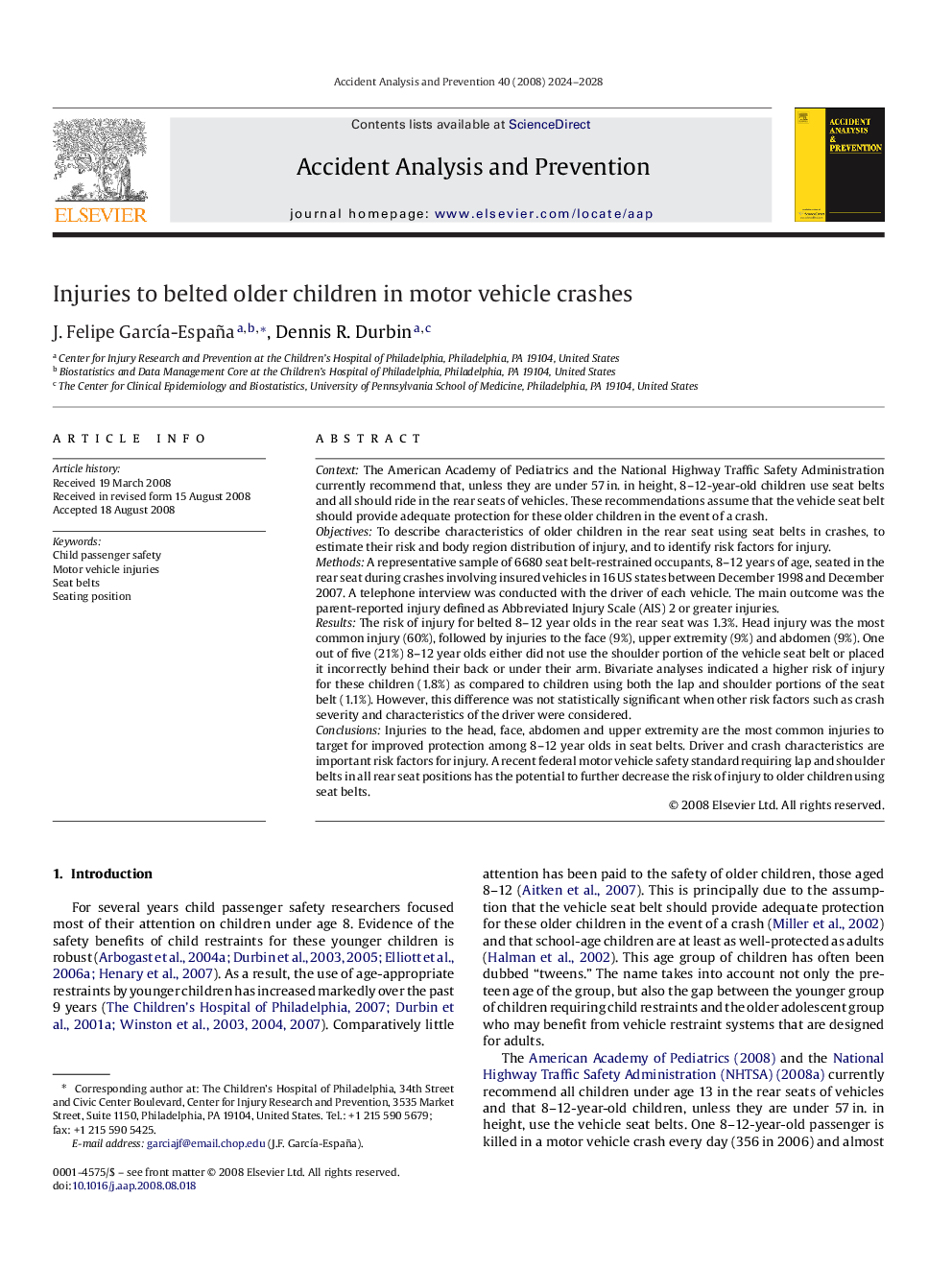| Article ID | Journal | Published Year | Pages | File Type |
|---|---|---|---|---|
| 573347 | Accident Analysis & Prevention | 2008 | 5 Pages |
ContextThe American Academy of Pediatrics and the National Highway Traffic Safety Administration currently recommend that, unless they are under 57 in. in height, 8–12-year-old children use seat belts and all should ride in the rear seats of vehicles. These recommendations assume that the vehicle seat belt should provide adequate protection for these older children in the event of a crash.ObjectivesTo describe characteristics of older children in the rear seat using seat belts in crashes, to estimate their risk and body region distribution of injury, and to identify risk factors for injury.MethodsA representative sample of 6680 seat belt-restrained occupants, 8–12 years of age, seated in the rear seat during crashes involving insured vehicles in 16 US states between December 1998 and December 2007. A telephone interview was conducted with the driver of each vehicle. The main outcome was the parent-reported injury defined as Abbreviated Injury Scale (AIS) 2 or greater injuries.ResultsThe risk of injury for belted 8–12 year olds in the rear seat was 1.3%. Head injury was the most common injury (60%), followed by injuries to the face (9%), upper extremity (9%) and abdomen (9%). One out of five (21%) 8–12 year olds either did not use the shoulder portion of the vehicle seat belt or placed it incorrectly behind their back or under their arm. Bivariate analyses indicated a higher risk of injury for these children (1.8%) as compared to children using both the lap and shoulder portions of the seat belt (1.1%). However, this difference was not statistically significant when other risk factors such as crash severity and characteristics of the driver were considered.ConclusionsInjuries to the head, face, abdomen and upper extremity are the most common injuries to target for improved protection among 8–12 year olds in seat belts. Driver and crash characteristics are important risk factors for injury. A recent federal motor vehicle safety standard requiring lap and shoulder belts in all rear seat positions has the potential to further decrease the risk of injury to older children using seat belts.
